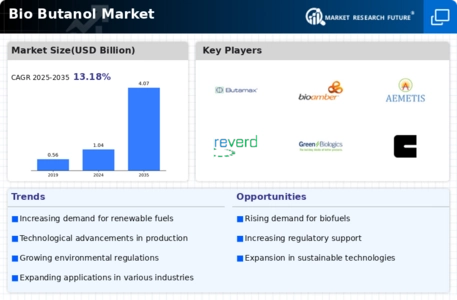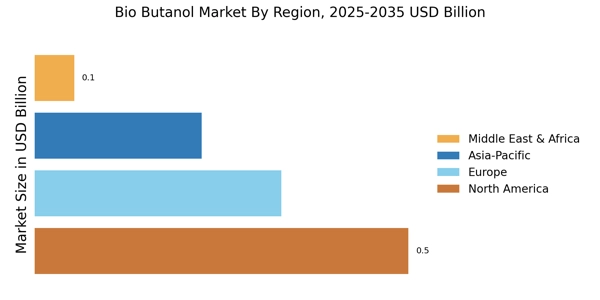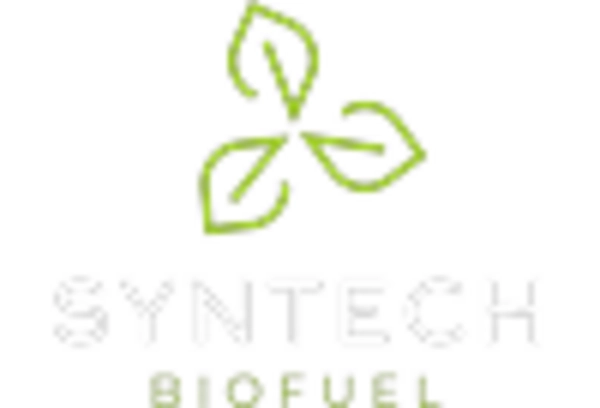Rising Demand for Renewable Fuels
The increasing demand for renewable fuels is a primary driver for the Bio Butanol Market. As consumers and industries alike seek sustainable alternatives to fossil fuels, bio butanol emerges as a viable option due to its compatibility with existing infrastructure and its lower carbon footprint. The market for biofuels is projected to grow significantly, with estimates suggesting a compound annual growth rate of over 10% in the coming years. This trend is further fueled by the automotive sector's shift towards greener technologies, where bio butanol can serve as a direct substitute for gasoline. Consequently, the Bio Butanol Market is likely to experience heightened interest and investment as stakeholders recognize the potential for bio butanol to meet both energy needs and environmental goals.
Government Incentives and Policies
Government incentives and supportive policies play a crucial role in shaping the Bio Butanol Market. Many countries are implementing regulations that promote the use of biofuels, including bio butanol, as part of their commitment to reducing greenhouse gas emissions. For instance, tax credits, subsidies, and grants are being offered to companies that invest in biofuel production technologies. These initiatives not only encourage the development of bio butanol but also enhance its market competitiveness against traditional fossil fuels. As a result, the Bio Butanol Market is likely to benefit from increased production capacities and innovation, driven by favorable governmental frameworks that aim to transition towards a more sustainable energy landscape.
Diverse Applications Across Industries
The versatility of bio butanol across various industries serves as a significant driver for the Bio Butanol Market. Bio butanol is not only utilized as a fuel but also finds applications in the production of solvents, plastics, and chemicals. Its properties make it suitable for use in coatings, adhesives, and personal care products, thereby broadening its market appeal. The chemical industry, in particular, is exploring bio butanol as a sustainable feedstock, which could lead to increased adoption in manufacturing processes. As industries seek to reduce their reliance on petroleum-based products, the Bio Butanol Market is poised for growth, driven by the expanding range of applications and the push for sustainable alternatives.
Technological Innovations in Production
Technological innovations in the production of bio butanol are significantly influencing the Bio Butanol Market. Advances in fermentation processes and genetic engineering are enhancing the efficiency and yield of bio butanol production from biomass. For example, recent developments in microbial strains have shown the potential to increase production rates by up to 30%, making bio butanol more economically viable. Furthermore, the integration of biorefinery concepts allows for the simultaneous production of multiple biofuels, optimizing resource utilization. These technological strides not only lower production costs but also improve the overall sustainability of bio butanol, thereby attracting more investments and interest in the Bio Butanol Market.
Growing Awareness of Environmental Impact
The growing awareness of environmental impacts associated with fossil fuels is driving interest in the Bio Butanol Market. As climate change concerns escalate, consumers and businesses are increasingly prioritizing sustainable practices. Bio butanol, with its lower emissions and renewable nature, presents an attractive alternative. Market Research Future indicates that consumers are willing to pay a premium for products that are environmentally friendly, which could lead to increased demand for bio butanol-based products. This shift in consumer behavior is likely to encourage manufacturers to explore bio butanol as a key ingredient in various applications, including solvents and fuels, thereby expanding the Bio Butanol Market.


















Leave a Comment